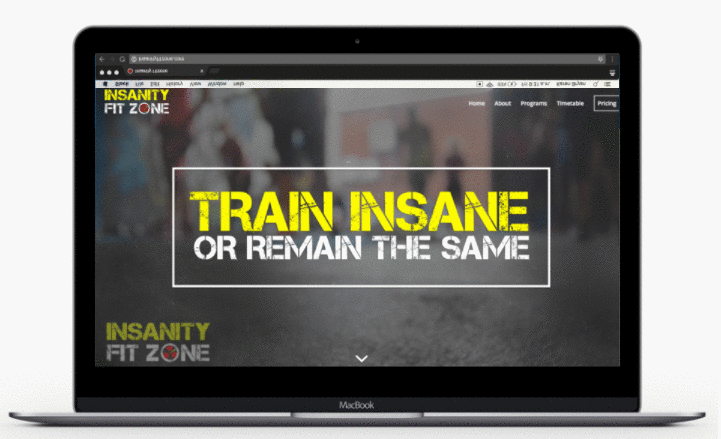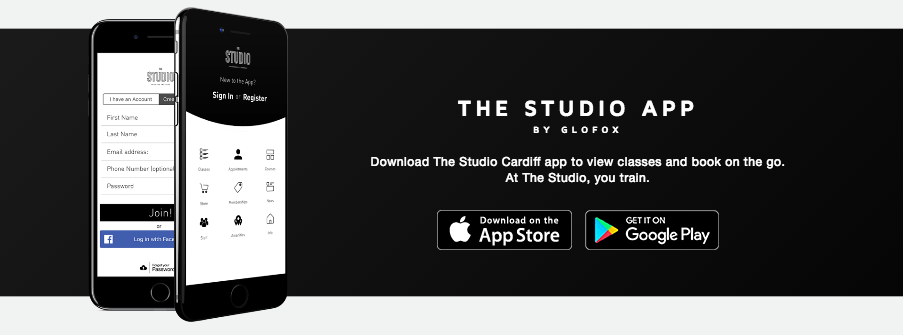Owning and running a fitness business is an exciting journey to take. That said, it can be a challenging journey, at the least. You don’t need to be told how competitive the industry is right now – we know you’ve experienced it first hand.
However, Did You Know That Your Branding (or Lack There Of) could Make or Break Your Fitness Business?
That’s right, branding is a crucial element of your fitness business strategy. It’s the brand you create that will differentiate your business from rivals on the block. We’ve heard it too many times:
“What even is a brand? Does that really apply to my business? Isn’t branding only relevant for the ‘big shots'”.
Your brand isn’t just your logo or the colour paint on your walls (although that is a big part), it’s what your fitness business represents inside the gym and out. It should incorporate a range of elements that enable you to differentiate your service from competitors.
- Business name;
- Logo and tag line;
- Tone of voice, style and colour palette;
- Perceptions and associations with your service (partnerships, brand ambassadors).
Our goal here is to help you create a brand that really sets you apart from the competition.
1. Define Your Target Audience
Defining your target market is such an important starting point for creating your brand. If you want to create a brand that attracts a particular type of person, you must understand the characteristics that define this type of person and the what resonates with them.
Do you understand who exactly your ideal customer is? If not, check out our blog marketing your fitness studio 101. From here, you’ll learn how to deep dive into defining your target market:
- What is your ideal member’s age, gender, location and income level?
- What are their communication preferences (email, social media, phone)?
- What are their goals and aspirations?
- What challenges do they face on a day to day basis?
When you take the time to truly understand your dream member, you can carefully craft the various elements of your brand to represent everything they’re looking for in a gym or fitness studio. This is where you brand identity kicks in.
2. Determine Your Brand Identity
Your brand identity is the way you want your members and potential members to perceive your fitness brand. The brand identity you create should be unique and distinguish your business from rivals gyms and studios.
For example, do you want your facility to be known as a judgment free zone suitable for those of all ages? Or do you run a studio that you want members and potential members to refer to as up to date with the latest fitness regimes, intense and community driven? Once you know how you want your brand identity to look like, you can begin building out a strategy to turn this idea into a reality. This is where your brand image kicks in..
Your brand image is how your brand is actually perceived by members. Just because you say your fitness studio is “a family friendly judgment free zone“, doesn’t mean your members feel that way about it. Your brand building strategy should thus be all about making your brand identity equal to your brand image.
Often, fitness business’s will develop partnerships with businesses who already have the qualities they want their brand to embody, or work with brand ambassadors to help bring this identity to life.
3. Craft a Mission Statement
Your mission statement should showcase your gym or studio’s unique values and goals for the future. By crafting a mission statement for your gym or studio, you’re essentially letting the world know what you’re trying to do and how you plan on doing it better than your competitors.
At this point, you should ask yourself some simple questions:
- What makes your gym or studio different?
- What values does your gym or studio stand for?
- Why would a potential member choose your facility over rivals?
It’s also important to know how to communicate your strengths in a way that resonates with your ideal customer, so be sure to follow a tone and style that will work in your favour.
WARNING: Avoid creating a bland, generic mission statement. As a rule of thumb, if your statement could easily be applied to any other gym or studio, it’s not going to do your business justice.
Check out these example fitness business mission statements for some inspiration!
4. Create a Logo That Resonates
You’ve figured out your ideal customer profile and you understand exactly what makes your studio different. Now, it’s time to use this information to bring your brand to life!
If you’ve been around the industry for a while, you probably already have a logo and a go to font and colour frame. However, this doesn’t mean you can’t give your brand a complete face lift. Maybe your style has changed over the years and you’ve really figured out what you stand for now. The more you’ve played the game and know your audience, the more you understand what works and what doesn’t work for them – don’t be afraid of implementing change.
The Top 10 Barriers
Slowing Your Fitness
Business Growth
Discover more 
When it comes to your logo we have two major pieces of advice:
1. Simplicity is Key: The best logos are ones which can be easily sketched. Take the Nike ‘swoosh’ for example. It’s simple, recognizable and memorable. Be sure to do your research and check out the competition too. It’s important to identify how your new logo and your overall brand will fit in the mix.
2. Be Mindful!: It may look good on paper, but will your members want to wear it? A great way to build and spread awareness of your unique community is by creating branded swag such as hoodies, hats and gym shirts. However, members will only want to wear your brand if it truly resonates with their values. Be sure to factor this in when creating your logo!
5. Create a Catchy Tag Line
As a fitness business, your tag line or slogan is super important. With this one simple line, you have the power to tell the world exactly what you’re all about. Your tag line should be short, catchy, memorable and distinctive so as to separate your business from the crowd.
Check out this great example by The Studio Method Cardiff:
The Studio Method – “We are Not a Gym”
Instantly, we can glean what this studio stands for without them so much as even mentioning the word ‘Personalised’! From the outset, we know that this studio is NOT going to feel like a crowded, generic, unpersonalised gym.
This fitness service is going to be highly tailored to each client’s individual needs. This tag line is so powerful that potential clients are likely to believe it before even walking through the door.
Ask yourself: If a potential client knew nothing else but your business name and tag line, would they understand your uniquely valuable offering?
6. Build a Website
Your website will be the hub of your online activity and thus, needs to be consistent with your new branding strategy.
Be sure to keep it real, include your members and show off your community! When a potential client lands on your website, your goal should be to establish an instant connection. By having a tag line, imagery and content that resonates with their needs front and foremost, this is highly achievable.

7. Build a Branded Mobile App
A custom branded app can give you that important edge over rival gyms/studios and really impress prospective members. How? Your app gives you the opportunity to really showcase your brand and offer members more value for their custom. In particular, more value than your competitors have offered them.
What you really want to do is create an app that has features your customers will love, while at the same time being uniquely designed to the brand you’ve worked hard to create. You can give your members the flexibility they need to book and pay for classes, courses, appointments and even memberships when it’s most convenient for them.
In such an overcrowded marketplace where studios are popping up on every street corner, this advantage could be just what you need to step ahead of the competition and bring your brand to life.
For example, check out the Studio Method’s custom branded mobile app:
Be sure to check out this must read for all gym and studio owners:


















